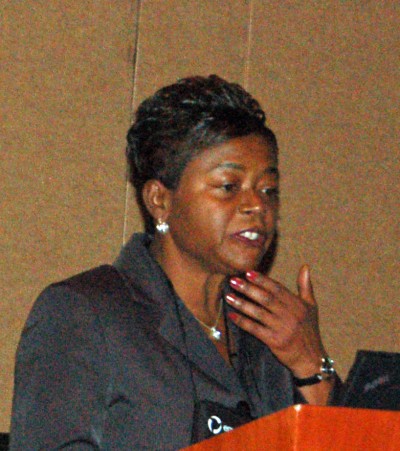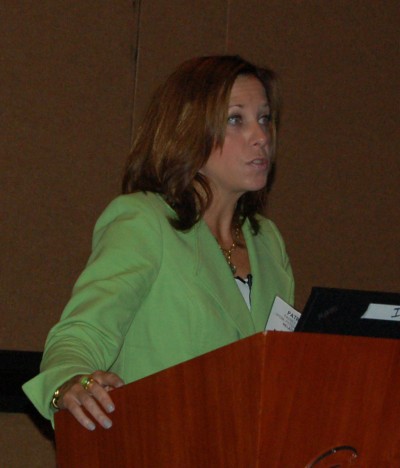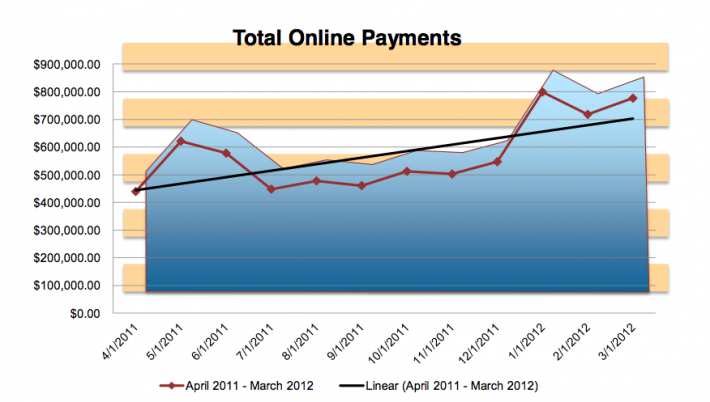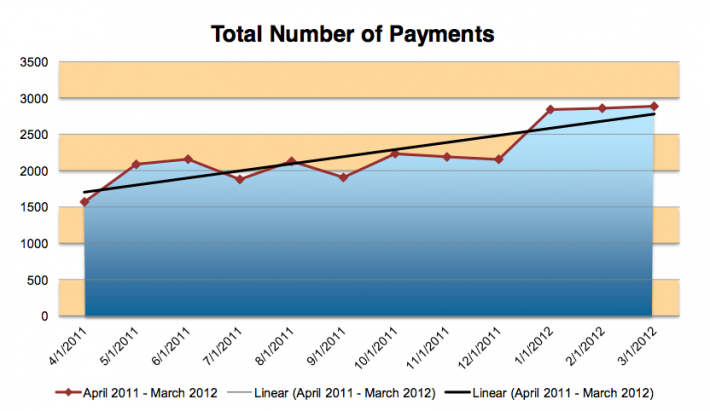“If you build it, will they come?” That was the question that Boca Raton Regional Hospital in Florida wanted to answer with its new online bill paying system.
Veronica Small, patient financial services director at Boca Raton, presented a case study of their online bill paying system at the Healthcare Financial Management Association’s 2012 leadership conference. She was joined by Patrice Wolfe, senior vice president of RelayHealth, the vendor for the project.
Boca Raton Regional Hospital is a 400-bed acute care facility in Florida. A private, not-for-profit hospital, its patient population skews older, with 70 percent of the patient mix on Medicare, and another 27 percent on managed care plans. Only 2 percent are uninsured and 1 percent qualify for Medicaid.
Like many hospitals, the current economic crunch has resulted in declining patient volumes. “That means more and more it’s so important for us to look at patient satisfaction,” says Small. When patients evaluate what constitutes quality care, they look at the “whole continuum,” she says, which includes not only clinical care but also patient financial service touchpoints: “payment processing, point-of-service collections, and that statement in the mail that tells them how much they may owe.”
Boca Raton wanted to increase its cash flow and decrease its days A/R, but not at the price of patient satisfaction. Whatever the solution, it had to be convenient to patients. It also had to increase convenience to PFS staff internally, making it easier and therefore more efficient for them to collect at point-of-service.
Click here to download the free case study: Building a Better Business Office.
Before this project, Boca Raton used a centralized credit card processing workflow that was so cumbersome it resulted in missed opportunities to collect fees and charges at initial patient touchpoints. The cold reality in today’s healthcare finance world is that “patients need to pay up front,” says Small. “We need to get paid and we need to get it themright way.”
What Boca Raton would not accept is an increase in its infrastructure. Whatever the solution, it could not mean adding hardware or software that the hospital’s IT organization would have to purchase or maintain. The hospital selected RelayHealth’s RelayAccount product, an online solution the appeared to solve the internal challenges, but would it find acceptance by the patient community?
The concern was that Boca Raton’s core demographic, Medicare-aged patients, would be technology-averse. Recent studies have dispelled that myth, and one by the Pew Internet Project in 2012 found that among baby boomers – those currently between the ages of 50 and 65 that have begun sliding into Medicare – some 80 percent regularly use the Internet, including as a major resource for health information.
Still, studies are one thing and reality is another. “For implementation we decided to phase it,” Small says. The objective was to minimize risk. No matter how much one tests a solution when it is in development, when it goes live one never knows what will happen, she says, or if it will find acceptance among the patient community.
The project took four months, although most of that “was loading information on the portal,” Small says. The portal serves not only as a tool to check balances and pay bills, but it also provides a tremendous amount of useful information, such as a glossary of common medical terms, and links to Social Security, Medicaid, Medicare, and other agencies, as well as links to all the managed care plans accepted by the hospital.
After Go-Live
The system went live in April 2011 and internally, it revolutionized Boca Raton’s point-of-service collections business processes. “We started out with ten or so collection points, and now we have about 40,” Small says. With an online, cloud-based solution, anyone employee with a computer and an Internet connection can now became a payment processing center.
The objective was not to replace existing collection processes, but to replace the existing processes with solutions that would increase collections and increase the total number of collections. That is exactly what has happened, Small says. “Now I’m getting my money right away.” With the new system Boca Raton has cut its over-180-days accounts receivable by 6.1 percent.
The biggest benefit has been to patients, who can retrieve their balances online and pay their bills the same way through the same portal. It has estimators “to give a patient a guide of what their co-pay will be,” Small says, so payment can be collected up front. There are options to set up payment plans. Patients not only can see what they owe but they can also review past payment history. Even those patients whose bill has slid into bad debt can still make payments, Small says. And no bill is too small to pay online.
The system is also proving to be not only scalable so that it will serve a growing patient community, but it is also being expanded in other areas of revenue and expense. “We’re rolling it out to third-party vendors,” Small says. Her early-out vendor, bad debt vendor, balance after and insurance/self-pay vendor use the portal to post collections. “This means I do not have to wait,” she says.
There have been other key benefits. The new system enables enhanced reporting, and data can be sliced in a variety of ways. “You can get reports for each satellite location,” Small says. “You can track and trend how each location is doing.” Boca Raton assigns online payments by patients with a unique transaction code that enables the ability to extractthe source of an individual payment.
It has also increased the efficiency of the payment process to a point where Boca Raton was able to reduce headcount, the equivalent of 6 FTES.
Click here to download the free case study: Building a Better Business Office.
Lessons Learned
- Create a detailed implementation plan. “It’s not only important to have a very detailed plan in place, but also have clear accountability,” says RelayHealth’s Wolfe.
- New tools mean new workflows. “Your current workflow is premised on the tools you have available to you,” Wolfe says, and with the new tools, workflows will change. The implementation plan needs to address the process of redesigning workflows.
- Build a multi-disciplinary project team. The Boca Raton project not only had individuals from Patient Financial Services, but also from Patient Access, IT, and marketing. “That team stayed with the project until the very end,” Wolfe says, not only to watchdog it, but also to become “very important evangelists.” Because of the wide representation on the team, the project always had clear and consistent messaging, she says.
- Recruit super-users. Boca Raton put together a group of super users because when you roll out a new solution “you’re going to have questions,” Wolfe says.
- Have contingencies in place. There are Boca Raton staff accessible every day, all day, to patients in case they have an issue with the online payment system. So far, the contingency has been exactly that, because Small reports that problems have so far been few.
- Brief lag in posting. The new online payment system is not instantaneous. Boca Raton uses PayPal to manage its transactions and currently there is a “one-day lag,” Small says. Every morning there is a case poster who uploads a transactions file, she says.
- No infrastructure does not mean no maintenance. Although the RelayHealth solution did not require any additional equipment or software, there is still maintenance required. Because the portal contains so much information about managed plans, medical terms, and links to important sites, “you have to make sure you have someone to maintain it, and keep the information up-to-date and accurate,” Small says.
For more information about RelayHealth, RelayAccount and the Boca Raton project, download the case study Building a Better Business Office: A Case Study of Boca Raton Regional Hospital.








![[Image by creator from ]](/media/images/2015-04-cpf-report-training-key-component-of-s.max-80x80_F7Jisej.png)


![Report cover reads One Conversation Multiple Channels AI-powered Multichannel Outreach from Skit.ai [Image by creator from ]](/media/images/Skit.ai_Landing_Page__Whitepaper_.max-80x80.png)
![Report cover reads Bad Debt Rising New ebook Finvi [Image by creator from ]](/media/images/Finvi_Bad_Debt_Rising_WP.max-80x80.png)
![Report cover reads Seizing the Opportunity in Uncertain Times: The Third-Party Collections Industry in 2023 by TransUnion, prepared by datos insights [Image by creator from ]](/media/images/TU_Survey_Report_12-23_Cover.max-80x80.png)
![[Image by creator from ]](/media/images/Skit_Banner_.max-80x80.jpg)
![Whitepaper cover reads: Navigating Collections Licensing: How to Reduce Financial, Legal, and Regulatory Exposure w/ Cornerstone company logo [Image by creator from ]](/media/images/Navigating_Collections_Licensing_How_to_Reduce.max-80x80.png)
![Whitepaper cover text reads: A New Kind of Collections Strategy: Empowering Lenders Amid a Shifting Economic Landscape [Image by creator from ]](/media/images/January_White_Paper_Cover_7-23.max-80x80.png)